
Concept explainers
To discuss:
How and why would the student nurse respond to this situation.
Case summary:
Ms. G is a 28-year-old female patient admitted in the emergency department due to severe nausea and vomiting for past 48 hours. She had a history of Crohn’s disease and gastrointestinal problems. The patient had a bowel resection surgery one month ago, the patient seems too dehydrated. Hence, the emergency department nurse tried to start IV fluid. The nurse fails five times in attempting to insert the IV; the patient is upset over the needle pain and along with the abdominal pain. The patient tells the nurse to call an IV team to insert the IV, but the nurse took no notice and inserted the IV for sixth time with success as the patient is in tears due to the pain.
Explanation of Solution
The student nurse cannot take direct action on the emergency room nurse; hence the student nurse personally tells the emergency room nurse outside the patient room that she should call in the IV team and to stop attempting her skills on the patient.
To discuss:
The adequacy of the skills for professional practice and what that is tell about the nurse.
Case summary:
Ms. G is a 28-year-old female patient admitted in the emergency department due to severe nausea and vomiting for past 48 hours. She had a history of Crohn’s disease and gastrointestinal problems. The patient had a bowel resection surgery one month ago, the patient seems too dehydrated. Hence, the emergency department nurse tried to start IV fluid. The nurse fails five times in attempting to insert the IV; the patient is upset over the needle pain and along with the abdominal pain. The patient tells the nurse to call an IV team to insert the IV, but the nurse took no notice and inserted the IV for sixth time with success as the patient is in tears due to the pain.
Explanation of Solution
The nurse might be student nurse or a trainee nurse, and only the adequacy the nurse faces is that she is not still an Advanced Practice Registered Nurse (APRN), so that she can become as nurse advocate. As a nurse advocate, she can demand the rights of the patient and can implement quality care for the patient.
To discuss:
Whether to agree with the criteria of the nursing student to evaluate a successful outcome.
Case summary:
Ms. G is a 28-year-old female patient admitted in the emergency department due to severe nausea and vomiting for past 48 hours. She had a history of Crohn’s disease and gastrointestinal problems. The patient had a bowel resection surgery one month ago, the patient seems too dehydrated. Hence, the emergency department nurse tried to start IV fluid. The nurse fails five times in attempting to insert the IV; the patient is upset over the needle pain and along with the abdominal pain. The patient tells the nurse to call an IV team to insert the IV, but the nurse took no notice and inserted the IV for sixth time with success as the patient is in tears due to the pain.
Explanation of Solution
The student nurse done corrective actions of advocating for her patient, the student nurse saw the patient was in pain. Moreover, adding more pain to the patient, the nurse showed her skills like attempting IV fluids in the patient though patient insisted on the calling a IV team.
To discuss:
Whether there is any other criteria that is appropriate to use.
Case summary:
Ms. G is a 28-year-old female patient admitted in the emergency department due to severe nausea and vomiting for past 48 hours. She had a history of Crohn’s disease and gastrointestinal problems. The patient had a bowel resection surgery one month ago, the patient seems too dehydrated. Hence, the emergency department nurse tried to start IV fluid. The nurse fails five times in attempting to insert the IV; the patient is upset over the needle pain and along with the abdominal pain. The patient tells the nurse to call an IV team to insert the IV, but the nurse took no notice and inserted the IV for sixth time with success as the patient is in tears due to the pain.
Explanation of Solution
The only criteria that is available is to advocate for the pain who is in severe pain. Complaining of the emergency department nurse to the clinical instructor will not going to help the patient who is in the current.
To discuss:
Whether the nursing student meet the criteria? Why or why not?
Case summary:
Ms. G is a 28-year-old female patient admitted in the emergency department due to severe nausea and vomiting for past 48 hours. She had a history of Crohn’s disease and gastrointestinal problems. The patient had a bowel resection surgery one month ago, the patient seems too dehydrated. Hence, the emergency department nurse tried to start IV fluid. The nurse fails five times in attempting to insert the IV; the patient is upset over the needle pain and along with the abdominal pain. The patient tells the nurse to call an IV team to insert the IV, but the nurse took no notice and inserted the IV for sixth time with success as the patient is in tears due to the pain.
Explanation of Solution
The student nurse certainly met her criteria as a nurse advocate who is advocating for her patient who is in pain. The student nurse as a nurse advocated, advocated with the emergency room nurse to call in the IV team to insert the IV.
To discuss:
The knowledge, skills, and attitudes do you need to develop to continuously improve quality and safety when caring for child patients like Ms. G.
Case summary:
Ms. G is a 28-year-old female patient admitted in the emergency department due to severe nausea and vomiting for past 48 hours. She had a history of Crohn’s disease and gastrointestinal problems. The patient had a bowel resection surgery one month ago, the patient seems too dehydrated. Hence, the emergency department nurse tried to start IV fluid. The nurse fails five times in attempting to insert the IV; the patient is upset over the needle pain and along with the abdominal pain. The patient tells the nurse to call an IV team to insert the IV, but the nurse took no notice and inserted the IV for sixth time with success as the patient is in tears due to the pain.
Explanation of Solution
- The nurse should try to reduce the pain in the patient and try to keep them comfortable.
- The nurse should fulfil the demands ad rights of the patient.
- The nurse should advocate on behalf of the patient to demand their rights.
- The nurse should also educated the patient about their rights and demands
Want to see more full solutions like this?
Chapter 40 Solutions
FUND.OF NURSING BUNDLE >BI<
- CATH LAB FUNDAMENTALS I WORKSHEET #3 Patient #1 AO 113/68 M CaO2 mi/L LV 113/15 CvO2 ml/L RA M9 C.O. L/Min RV 33/8 S.V. PA 33/16 M C.I. ml/beat L/Min/M2 PAW M 17 S.I. ml/beat/M2 Hgb 15.1 S.V.R Dynes/sec/cm³ Hct % T.P.R Dynes/sec/cm³ PA Sat 69% P.V.R Dynes/sec/cm³ AO Sat 90% BSA M² HR 83BPM 02 Cons. _215_ml/min Ht _5_ft_5_in Wt. _213_ lbs Patient #2 AO 155/92 M CaO2 ml/L LV 155/21 CvO2 ml/L RA M 12 C.O. L/Min RV 41/22 S.V. ml/beat PA 41/20 M C.I. L/Min/M2 PAW M 20 S.I. Hgb S.V.R Hct 39 % T.P.R ml/beat/M2 Dynes/sec/cm³ Dynes/sec/cm³ 3 PA Sat 65 % P.V.R Dynes/sec/cm³ AO Sat _91 % BSA M² HR 88 BPM 02 Cons. 360 ml/min Ht 5 ft 11 in Wt. 169 lbs NAME:arrow_forwardCATH LAB FUNDAMENTALS I WORKSHEET #1 Patient #1 AO 151/89 M CaO2 mV/L LV 151/25 CvO2 mV/L RA M 17 C.O. L/Min RV 61/17 S.V. ml/beat PA 61/25 M C.I. L/Min/M2 PAW M 25 S.I. ml/beat/M2 Hgb S.V.R Dynes/sec/cm³ Hct 45% T.P.R Dynes/sec/cm³ PA Sat 68% P.V.R Dynes/sec/cm³ AO Sat 92% BSA M² HR 89 BPM 02 Cons. 245 ml/min Ht _5_ft_7_in Wt. _235 lbs Patient #2 AO 121/61 M CaO2 ml/L LV 151/19 CvO2 ml/L RA M 15 C.O. L/Min RV 51/15 S.V. ml/beat PA 51/20 M C.I. L/Min/M2 PAW M 19 S.I. ml/beat/M2 Hgb 15.2 S.V.R Dynes/sec/cm³ Hct % T.P.R Dynes/sec/cm³ PA Sat 76% P.V.R Dynes/sec/cm³ AO Sat 99% BSA M² HR 79 BPM Ht 02 Cons. 213 ml/min _5_ft_10 in Wt. _ 185 lbs 1arrow_forwardCATH LAB FUNDAMENTALS I WORKSHEET #1 Patient #1 AO 151/89 M CaO2 mV/L LV 151/25 CvO2 mV/L RA M 17 C.O. L/Min RV 61/17 S.V. ml/beat PA 61/25 M C.I. L/Min/M2 PAW M 25 S.I. ml/beat/M2 Hgb S.V.R Dynes/sec/cm³ Hct 45% T.P.R Dynes/sec/cm³ PA Sat 68% P.V.R Dynes/sec/cm³ AO Sat 92% BSA M² HR 89 BPM 02 Cons. 245 ml/min Ht _5_ft_7_in Wt. _235 lbs Patient #2 AO 121/61 M CaO2 ml/L LV 151/19 CvO2 ml/L RA M 15 C.O. L/Min RV 51/15 S.V. ml/beat PA 51/20 M C.I. L/Min/M2 PAW M 19 S.I. ml/beat/M2 Hgb 15.2 S.V.R Dynes/sec/cm³ Hct % T.P.R Dynes/sec/cm³ PA Sat 76% P.V.R Dynes/sec/cm³ AO Sat 99% BSA M² HR 79 BPM Ht 02 Cons. 213 ml/min _5_ft_10 in Wt. _ 185 lbs 1arrow_forward
- CATH LAB FUNDAMENTALS I WORKSHEET #6 Patient #1 AO 199/110 M CaO2 ml/L LV 199/24 CvO2 ml/L RA M 16 C.O. L/Min RV 41/16 S.V. ml/beat PA 41/25 M C.I. L/Min/M2 PAW M 24 S.I. ml/beat/M2 Hgb 15.1 S.V.R Dynes/sec/cm³ Hct % T.P.R Dynes/sec/cm³ PA Sat 71% P.V.R Dynes/sec/cm³ AO Sat 96% BSA M² HR 61 BPM 02 Cons. Ht 216 ml/min 4_ft_11_in Wt. _171_lbs Patient #2 AO 101/62 M CaO2 ml/L LV 101/12 CvO2 ml/L RA M 5 C.O. L/Min RV 20/5 S.V. ml/beat PA 20/10 M C.I. L/Min/M2 PAW M 12 S.I. ml/beat/M2 Hgb S.V.R Dynes/sec/cm³ Hct 43% T.P.R Dynes/sec/cm³ PA Sat 75% P.V.R Dynes/sec/cm³ AO Sat 97% BSA M² HR 68 BPM O2 Cons. 235 ml/min Ht _5_ft_5 in Wt. 145 lbsarrow_forwardCATH LAB FUNDAMENTALS I WORKSHEET #5 Patient #1 AO 112/63 M CaO2 ml/L LV 112/12 CvO2 ml/L RA M 8 C.O. L/Min RV 25/8 S.V. ml/beat PA 25/13 M C.I. L/Min/M2 PAW M 13 S.I. ml/beat/M2 Hgb 14.8 S.V.R Dynes/sec/cm³ Hct % T.P.R Dynes/sec/cm³ PA Sat 76% P.V.R Dynes/sec/cm³ AO Sat 96% BSA M² HR 82 BPM O2 Cons. 241 ml/min Ht _5_ft_9_in Wt. _180 lbs Patient #2 AO 140/82 M CaO2 ml/L LV 140/15 CvO2 ml/L RA M 12 C.O. L/Min RV 31/12 S.V. ml/beat PA 31/15 M C.I. L/Min/M2 PAW M 15 S.I. ml/beat/M2 Hgb 13.6 S.V.R Dynes/sec/cm³ Hct % T.P.R Dynes/sec/cm³ PA Sat 74% P.V.R Dynes/sec/cm³ AO Sat 93% BSA M² HR 71 BPM 02 Cons. 290 ml/min Ht _5_ft_0 in Wt. 188 lbsarrow_forwardCATH LAB FUNDAMENTALS I WORKSHEET #6 Patient #1 AO 199/110 M CaO2 ml/L LV 199/24 CvO2 ml/L RA M 16 C.O. L/Min RV 41/16 S.V. ml/beat PA 41/25 M C.I. L/Min/M2 PAW M 24 S.I. ml/beat/M2 Hgb 15.1 S.V.R Dynes/sec/cm³ Hct % T.P.R Dynes/sec/cm³ PA Sat 71% P.V.R Dynes/sec/cm³ AO Sat 96% BSA M² HR 61 BPM 02 Cons. Ht 216 ml/min 4_ft_11_in Wt. _171_lbs Patient #2 AO 101/62 M CaO2 ml/L LV 101/12 CvO2 ml/L RA M 5 C.O. L/Min RV 20/5 S.V. ml/beat PA 20/10 M C.I. L/Min/M2 PAW M 12 S.I. ml/beat/M2 Hgb S.V.R Dynes/sec/cm³ Hct 43% T.P.R Dynes/sec/cm³ PA Sat 75% P.V.R Dynes/sec/cm³ AO Sat 97% BSA M² HR 68 BPM O2 Cons. 235 ml/min Ht _5_ft_5 in Wt. 145 lbsarrow_forward
- CATH LAB FUNDAMENTALS I WORKSHEET #4 Patient #1 NAME: _ AO 145/100 M CaO2 _____ml/L LV 145/25 CvO2______ ml/L RA M 16 c.o. ______L/Min RV 41/16 S.V. _____ml/beat PA 41/25 M C.I. ______UMin/M2 PAW M25 S.I. _______ml/beat/M2 Hgb 13.1 S.V.R _______Dynes/sec/cm5 Hct % T.P.R________ Dynes/sec/cm5 PA Sat 65% P.V.R _______Dynes/sec/cm5 AO Sat 88% BSA __________M2 HR 120 BPM 02 Cons. 255 ml/min Ht-- 5- ft-7- in Wt. 198 lbsarrow_forwardCATH LAB FUNDAMENTALS I WORKSHEET #1 Patient #1 AO 151/89 M CaO2 mV/L LV 151/25 CvO2 mV/L RA M 17 C.O. L/Min RV 61/17 S.V. ml/beat PA 61/25 M C.I. L/Min/M2 PAW M 25 S.I. ml/beat/M2 Hgb S.V.R Dynes/sec/cm³ Hct 45% T.P.R Dynes/sec/cm³ PA Sat 68% P.V.R Dynes/sec/cm³ AO Sat 92% BSA M² HR 89 BPM 02 Cons. 245 ml/min Ht _5_ft_7_in Wt. _235 lbs Patient #2 AO 121/61 M CaO2 ml/L LV 151/19 CvO2 ml/L RA M 15 C.O. L/Min RV 51/15 S.V. ml/beat PA 51/20 M C.I. L/Min/M2 PAW M 19 S.I. ml/beat/M2 Hgb 15.2 S.V.R Dynes/sec/cm³ Hct % T.P.R Dynes/sec/cm³ PA Sat 76% P.V.R Dynes/sec/cm³ AO Sat 99% BSA M² HR 79 BPM Ht 02 Cons. 213 ml/min _5_ft_10 in Wt. _ 185 lbs 1arrow_forwardHow will knowing how to "Optimize Muscle Health in Aging" help a future dietitian in their practice? - Need a longer explanation that isn't bullet pointsarrow_forward
- How will knowing about "SGLT2 AND GLP1 Medications" help a future dietitian in their practice?arrow_forwardHow will knowing how to "Optimize Muscle Health in Aging" help a future dietitian in their practice?arrow_forwardHow will knowing how "New Mexico Double Up Food Bucks" help a future dietitian in their practice?arrow_forward
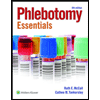 Phlebotomy EssentialsNursingISBN:9781451194524Author:Ruth McCall, Cathee M. Tankersley MT(ASCP)Publisher:JONES+BARTLETT PUBLISHERS, INC.
Phlebotomy EssentialsNursingISBN:9781451194524Author:Ruth McCall, Cathee M. Tankersley MT(ASCP)Publisher:JONES+BARTLETT PUBLISHERS, INC.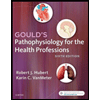 Gould's Pathophysiology for the Health Profession...NursingISBN:9780323414425Author:Robert J Hubert BSPublisher:Saunders
Gould's Pathophysiology for the Health Profession...NursingISBN:9780323414425Author:Robert J Hubert BSPublisher:Saunders Fundamentals Of NursingNursingISBN:9781496362179Author:Taylor, Carol (carol R.), LYNN, Pamela (pamela Barbara), Bartlett, Jennifer L.Publisher:Wolters Kluwer,
Fundamentals Of NursingNursingISBN:9781496362179Author:Taylor, Carol (carol R.), LYNN, Pamela (pamela Barbara), Bartlett, Jennifer L.Publisher:Wolters Kluwer,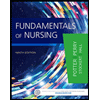 Fundamentals of Nursing, 9eNursingISBN:9780323327404Author:Patricia A. Potter RN MSN PhD FAAN, Anne Griffin Perry RN EdD FAAN, Patricia Stockert RN BSN MS PhD, Amy Hall RN BSN MS PhD CNEPublisher:Elsevier Science
Fundamentals of Nursing, 9eNursingISBN:9780323327404Author:Patricia A. Potter RN MSN PhD FAAN, Anne Griffin Perry RN EdD FAAN, Patricia Stockert RN BSN MS PhD, Amy Hall RN BSN MS PhD CNEPublisher:Elsevier Science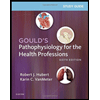 Study Guide for Gould's Pathophysiology for the H...NursingISBN:9780323414142Author:Hubert BS, Robert J; VanMeter PhD, Karin C.Publisher:Saunders
Study Guide for Gould's Pathophysiology for the H...NursingISBN:9780323414142Author:Hubert BS, Robert J; VanMeter PhD, Karin C.Publisher:Saunders Issues and Ethics in the Helping Professions (Min...NursingISBN:9781337406291Author:Gerald Corey, Marianne Schneider Corey, Cindy CoreyPublisher:Cengage Learning
Issues and Ethics in the Helping Professions (Min...NursingISBN:9781337406291Author:Gerald Corey, Marianne Schneider Corey, Cindy CoreyPublisher:Cengage Learning





